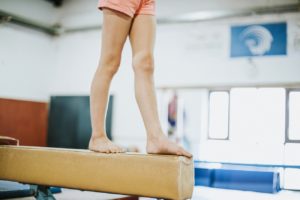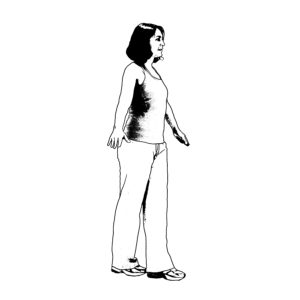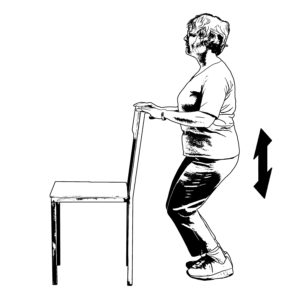What can we have in common with those Olympians running, jumping, climbing, skateboarding and surfing in Tokyo right now?
Great physical balance.
In this blog we’re going to show how we can all win the gold of better balance, no matter how old we are––and why our lives depend on it!

Olympians are balance extremists. We witness that when gymnast Simone Biles nails the notoriously dangerous, Yurchenko double pike. When 13 year old skateboarder, Sky Johnson lands a frontside 540. When sport climber Brooke Raboutou Spiderwoman-sprints up a climbing wall three stories high––in just over nine seconds. And when surfer Gabriel Mending pops up and snaps turns on monster waves. (Surfing, one of six new sports in the Olympics, ranks as the number one sport requiring the most balance.)
We may not need balance to win gold medals or commercial endorsements, but all of us, no matter our age, need good balance to keep us from life-altering falls and injuries.
“Balance is what keeps you living your best life and can certainly save your life,” says specially-trained physical therapist, Sarah Shearer-Smith.
Sarah is Consonus Healthcare’s long-time Northwest Director of Clinical Services and one of a small number of clinicians in the US who is recognized as a trained geriatric specialist in physical therapy and an exercise expert for older adults.
Here’s a startling example of how balance changed two lives.
Resident Goes From 17 Falls in a Month to Just One
According to the Centers for Disease Control and Prevention (CDC), one of four adults, 65 and older, falls every year. These often result in head injuries and broken bones. And with every one of those mishaps, the chances of falling again doubles.
A past patient of Shearer-Smith’s, a 75 year-old man we’ll call Charlie, arrived in her care after losing his balance or falling 17 times––in just one month! Each injury compounded the next.
“He went from bruises, to sprains, to a head injury and fracture. The falls prevented him from doing the activities that he loved and that brought him meaning,” says Shearer-Smith. “And the falls and injuries weren’t just affecting his life.” Charlie’s wife took on the emotional and physical burden of having a loved one living in a compromised state, so then she was unable to do the activities she loved.
Shearer-Smith and her team went to work. They created a program for Charlie, addressing all of his needs including balance, using simple but effective exercises. Following the interventions, David went from 17 falls in a month to just one.
“It was a huge win for both Charlie and his wife.” says Shearer-Smith.
3 Easy Ways You Too Can Maintain or Restore Your Balance
“Here’s something most people don’t know,” says Shearer-Smith. “As we grow older, our muscle and skeletal systems are obviously going to change, but we can actually slow and lessen those changes. We can train and prepare ourselves to handle the balance challenges we each face every day. We can prevent (or at least minimize) falls and injuries.”
The following strength exercises are designed by Shearer-Smith to mimic situations and challenges we experience–often unknowingly–every day. They’re easy to do wherever you are and you don’t need any equipment or expensive gym membership. Do them about three times a week and you’re on your way to better balance! (As always, before beginning a new exercise program, consult your doctor and/or physical therapist.)
#1 Strengthen Your Sensory Abilities
Like badminton, tennis, and volleyball Olympians, our sensory perception and integration abilities need to stay sharp. We use them when we suddenly turn our heads while driving, when we hear a loud noise, or when someone calls our name. We use them when we put a shirt on over our head or walk in the dark to the bathroom in the middle of the night. These exercises keep our sensory systems “balanced”. Complete these exercises standing at a counter or table with feet shoulder-width apart. (You can place a chair behind you for added security.)
- Eyes Closed: Place your hands on the counter or table and close your eyes. Hold for 30 seconds.
- Head Turns (Right/Left): Next, open your eyes and while still holding onto the counter or table, turn your head, slowly looking over your right then left shoulders, 5-10 times each.
- Head Turns (Up/Down): Finish the exercise by slowly looking up and then down, 5-10 times each, with your eyes open and holding onto the counter or table.
If you’re up for more of challenge, try placing your feet together when doing the exercises, or holding onto the counter or table with one hand. (Keep that chair behind you!)
#2 Strengthen Your Footing
Like soccer and karate Olympians, we need balance to shift our weight suddenly, walk along a narrow path, stand on one foot to go up or over a threshold, step around a pet, or navigate a slippery or moving surface. Our perfect base of support is when our center of gravity is centered over our feet and our feet are 3-4 inches apart. When that distance is shortened or when we have to move our center of gravity, our stability is compromised. These exercises intentionally put us in that compromised situation, but in a safe and controlled way. They help us learn to adjust our footing, so we’re prepared when challenged in real situations. Complete these exercises standing at a counter or table with eyes open. (Again, you can place a chair behind you for added security.)

- Feet Together and Tandem Stance: Place your feet together. Hold for 30 seconds. Move one foot in front of the other, heel-to toe. Hold for 30 seconds. Exchange feet and repeat, 30 more seconds.
- Weight-Shifting: Next, return your feet to shoulder distance apart. Keeping your feet solidly on the ground, slowly move your weight to your heels, then toes, like shifting your weight from 6 o’clock to 12 o’clock (don’t rock). Repeat 10 times. Switch to slowly shifting your weight from right to left, or 3 o’clock to 9 o’clock. Repeat another 10 times.
- Reaching: Now, keep your feet solidly on the ground, shoulder-width apart, try to lift one hand off the counter or table and reach forward 5 times, then out to the side 5 times. Switch arms and repeat; forward 5 times, out to the side 5 times.
- One-Leg Stance: Finish up by trying to stand on one leg. Keep your hands on the counter or table and that chair behind you!) The goal is greater than 8-10 seconds. This is an important exercise because when we walk, we’re actually standing, briefly, on one leg for a time.
If you’re up for more of challenge, try holding onto the counter or table with one-hand.
#3 Strengthen Your Muscles and Joints
Like sailing and skateboarding Olympians, we need adequate strength, power and range of motion to accomplish all these movements. Here are two exercises to boost the muscle groups and joints most critical to our balance and stability: the ankle (dorsiflexors and calves), the quadriceps (knee extensors) and the glutes (hip extensors). Complete these exercises standing at a counter or table with your eyes open. (Keep that chair behind you for added security.)

- Heel/Toe Raises: We can lose up to 20 degrees of movement in our ankles as we age. This exercise keeps our ankles and calf muscles flexible and strong. Slowly shift your weight
- forward to your toes and raise your heels up and off the ground. Then reverse, slowly shifting your weight backward towards your heels and lifting your toes up and off the floor. Try to hold each position 3-5 seconds.
- Mini Squats: Slowly bend your hips and knees as if you were going to sit in the chair behind you, but just as you’re about to sit, stand up slowly. Repeat 5-10 times.
“All the things we enjoy doing, all the activities that bring meaning to our lives, that bring happiness and enjoyment, require balance,” says Shearer-Smith. “If we can’t move about freely and safely, we lose access to those things and increase the amount of assistance we need from our loved ones; it can become expensive and change our living situations.”
So, as you watch the Olympics, notice how the athletes use balance to break records and win medals. And know you too can win a life free of injury and pain––with great balance!
In our next blog, Shearer-Smith will share easy tips on how to prevent falls. See you next time!